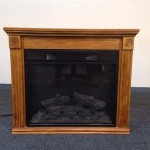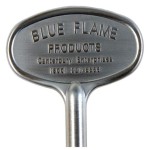Replacing a Gas Fireplace with a Pellet Stove Insert: A Comprehensive Guide
Many homeowners are increasingly considering alternatives to traditional gas fireplaces for supplemental heating. Pellet stove inserts offer a compelling solution, providing efficient and environmentally conscious heating while often enhancing the aesthetic appeal of an existing fireplace. This article provides a detailed exploration of the process, benefits, and considerations involved in replacing a gas fireplace with a pellet stove insert.
A pellet stove insert is designed to fit directly into an existing fireplace opening, using the existing chimney for venting. Unlike freestanding pellet stoves, inserts maintain the traditional fireplace look while upgrading the heating system with modern technology. They burn small, compressed wood pellets made from recycled wood waste, providing a sustainable and cost-effective heating alternative to natural gas or propane.
Understanding the Benefits of Pellet Stove Inserts
Several key advantages drive the decision to switch from a gas fireplace to a pellet stove insert. These benefits encompass cost savings, environmental considerations, and efficiency improvements.
Cost Efficiency: Pellet stoves generally burn fuel that is less expensive than natural gas or propane, especially when gas prices are high. While the initial investment in a pellet stove insert can be significant, the long-term operational costs are typically lower. The price of wood pellets fluctuates depending on location and demand, but it often remains competitive with fossil fuel alternatives. Furthermore, many pellet stoves qualify for tax credits or rebates, further reducing the upfront cost.
Environmental Friendliness: Wood pellets are a renewable resource derived from recycled wood waste, such as sawdust and wood shavings. Burning wood pellets is considered carbon neutral because the carbon dioxide released during combustion is offset by the carbon absorbed by the trees during their growth. While any combustion process produces emissions, modern pellet stoves are designed to burn pellets cleanly and efficiently, minimizing particulate matter and other pollutants. Compared to gas fireplaces, pellet stoves often produce fewer greenhouse gas emissions.
Heating Efficiency: Pellet stoves are highly efficient heating appliances, typically achieving efficiency ratings of 75% to 90%. This means that a large percentage of the energy contained in the wood pellets is converted into usable heat for the home. Newer models incorporate advanced features such as thermostatically controlled blowers and automatic ignition systems, optimizing heat output and fuel consumption. Gas fireplaces, particularly older models, are often less efficient, with a significant portion of the heat escaping up the chimney.
Zone Heating Capability: Pellet stove inserts are excellent for zone heating, allowing homeowners to heat specific areas of their homes rather than the entire house. This can significantly reduce heating costs, as homeowners can focus their heating efforts on the rooms they are actively using. Many pellet stoves have programmable thermostats that allow users to set specific temperature levels for different times of the day, further optimizing energy use.
Aesthetics and Ambience: While primarily functional, pellet stove inserts can also enhance the aesthetic appeal of a living space. Many models are available in various styles and finishes, allowing homeowners to choose an insert that complements their existing décor. The visible flame provides a warm and inviting ambiance, similar to a traditional wood-burning fireplace, but with the convenience and efficiency of pellet fuel.
Preparing for the Pellet Stove Insert Installation
Proper preparation is crucial for a successful gas fireplace replacement with a pellet stove insert. This involves several key steps, including assessing the existing fireplace, selecting the right insert, and preparing the chimney.
Fireplace Assessment: Before purchasing a pellet stove insert, it is essential to carefully assess the existing fireplace opening and chimney. Measure the fireplace opening's height, width, and depth to ensure that the chosen insert will fit properly. Inspect the chimney for any signs of damage or deterioration, such as cracks, missing bricks, or creosote buildup. A professional chimney sweep can thoroughly inspect the chimney and recommend any necessary repairs or cleaning.
Insert Selection: Choosing the right pellet stove insert depends on several factors, including the size of the area to be heated, the desired heat output, and the available budget. Pellet stoves are rated in terms of BTU (British Thermal Units) output, which indicates the amount of heat they can produce per hour. A larger space will require a stove with a higher BTU rating. Consider features such as hopper capacity (which determines how often the stove needs to be refilled), automatic ignition, and thermostat control. Research different brands and models thoroughly, reading reviews and comparing specifications to find the best option for individual needs.
Chimney Preparation: Pellet stove inserts require a dedicated chimney liner to ensure proper venting and prevent dangerous carbon monoxide buildup. A stainless steel liner is typically recommended, as it is durable and resistant to corrosion. The liner must be properly sized and installed according to local building codes and the manufacturer's instructions. This is a critical step that should be performed by a qualified professional. In some cases, the existing chimney may need to be modified or repaired to accommodate the new liner. Local codes may require a permit for this type of work, so it is vital to check with the local building department before proceeding.
Gas Line Disconnection: Before installing the pellet stove insert, the existing gas line to the gas fireplace must be safely disconnected and capped off by a qualified professional. This is a crucial safety measure to prevent gas leaks and potential explosions. The gas line should be properly capped and sealed to ensure that no gas can escape.
Electrical Connection: Pellet stove inserts require an electrical connection to power the auger, blower, and other components. Ensure that a properly grounded electrical outlet is located near the fireplace opening. If necessary, an electrician can install a new outlet or upgrade the existing wiring to meet the stove's electrical requirements.
The Installation Process of a Pellet Stove Insert
The installation of a pellet stove insert is a multi-step process that requires careful attention to detail. While some homeowners may be tempted to perform the installation themselves, it is generally recommended to hire a qualified professional to ensure that the job is done safely and correctly.
Insert Placement: The pellet stove insert is carefully positioned inside the fireplace opening, ensuring that it is level and properly aligned. The stove may need to be shimmed or adjusted to ensure a secure and stable fit. The insert should be placed in a way that allows for adequate airflow around the unit.
Chimney Liner Installation: The stainless steel chimney liner is inserted into the existing chimney, connecting to the stove's flue collar. The liner must be properly sealed to prevent leaks and ensure that all combustion gases are vented safely outside. The liner should extend to the top of the chimney and be capped with a suitable rain cap to prevent water from entering the chimney.
Electrical Connection: The pellet stove insert is connected to the electrical outlet, ensuring that the wiring is properly grounded and secure. The electrical connection should be checked to ensure that it meets all local building codes and regulations.
Testing and Calibration: Once the insert is installed, it should be thoroughly tested to ensure that it is functioning correctly. This includes verifying that the auger is feeding pellets properly, the blower is circulating air effectively, and the thermostat is accurately controlling the temperature. The stove may need to be calibrated to optimize its performance and efficiency.
Final Inspection: After the installation is complete, a final inspection should be performed to ensure that all aspects of the installation meet safety standards and building codes. This inspection may be conducted by a local building inspector or a certified chimney technician.
Maintaining Your Pellet Stove Insert
Regular maintenance is essential to ensure the long-term performance and efficiency of a pellet stove insert. This includes cleaning the stove, emptying the ash pan, and inspecting the chimney.
Ash Removal: Wood pellets produce ash as they burn, so it is important to regularly empty the ash pan. The frequency of ash removal will depend on how often the stove is used and the type of pellets being burned. Generally, the ash pan should be emptied every few days or weeks.
Cleaning the Stove: The pellet stove insert should be regularly cleaned to remove any ash or debris that may accumulate inside the unit. This includes cleaning the burn pot, the heat exchangers, and the exhaust vent. A specialized brush and vacuum cleaner may be used to remove ash and debris from hard-to-reach areas. A clean stove will burn more efficiently and produce less smoke.
Chimney Inspection and Cleaning: The chimney should be inspected annually by a qualified chimney sweep to check for any signs of creosote buildup or damage. Creosote is a flammable substance that can accumulate in the chimney over time, posing a fire hazard. The chimney should be cleaned regularly to remove any creosote buildup and ensure that it is venting properly.
Regular Maintenance: In addition to ash removal, stove cleaning, and chimney inspection, other routine maintenance tasks may be required, such as lubricating moving parts and checking the condition of the gaskets and seals. Refer to the manufacturer's instructions for specific maintenance recommendations.
Replacing a gas fireplace with a pellet stove insert can be a worthwhile investment for homeowners seeking a more efficient, environmentally friendly, and cost-effective heating solution. Careful planning, proper installation, and regular maintenance are essential to ensure the successful conversion and the long-term satisfaction with the new heating system.

Pellet Stove Inserts Turn Drafty Fireplaces Into Heaters Complete Home Concepts

Wood Stoves Pellet Gas Fireplace Inserts

Sawmill Creek Woodworking Community

Pellet Fireplace Inserts Lopi Stoves Made In Usa

Convert From Wood To Gas With A Insert The Kernel Burner

Fireplace Insert Installation Wood Inserts Gas Pellet And Electric

Fireplace Insert Stoves Wood Gas Pellet Traditional Baltimore Maryland
Can I Replace Gas Fireplace W Pellet Insert Hearth Com Forums Home

Pellet Fireplace Inserts Lopi Stoves Made In Usa

Pellet Burning Fireplace Inserts Sierra Hearth And Home
Related Posts








